Le pays du soleil levant - Le Japon est célèbre pour sa cuisine diversifiée et unique. L'un d'eux est le gâteau Wagashi. Wagashi japonais est une collation japonaise appréciée qui comprend généralement des bonbons fabriqués à partir de sucre, de sirop et de "an" (pâte de haricots rouges sucrée). De plus, vous pouvez trouver de délicieuses friandises aromatisées au sel et à la sauce soja, notamment de l'enbei et de l'arare (galettes de riz) et du dango (boulettes). Les gâteaux Wagashi font partie intégrante de la culture japonaise depuis des siècles et sont souvent servis lors des cérémonies du thé ou comme une gâterie sucrée pour les occasions spéciales. Découvrons les choses intéressantes qui entourent ce gâteau traditionnel avec Japan With Love Store.
1. Qu'est-ce que le Wagashi ?
L'histoire du Wagashi remonte aux temps anciens au Japon. Les racines du Wagashi se trouvent dans les rituels bouddhistes et les cérémonies du thé, où l'offrande et la consommation de bonbons jouaient un rôle important.
L'introduction du sucre et des bonbons raffinés de Chine pendant la période de Nara (710-794) a inspiré le développement du Wagashi. Cependant, le Wagashi japonais a pris ses caractéristiques distinctes et ses variations régionales pendant la période Edo (1603-1868).
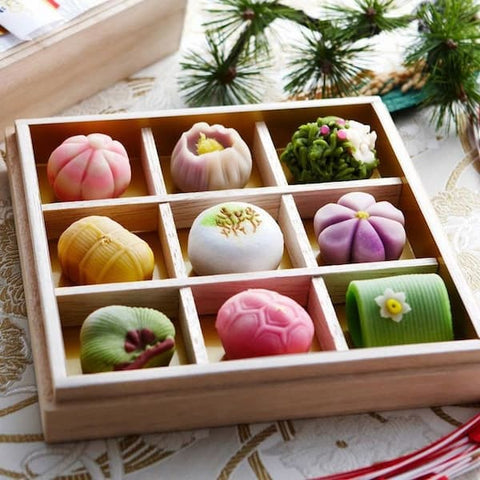
Le Wagashi est une douceur japonaise très appréciée
Pendant la période Meiji (1868-1912), le terme wagashi a été créé pour différencier les bonbons japonais des bonbons européens qui étaient importés au Japon. Quel est le goût du wagashi ? La texture de ces friandises est délicieusement douce et moelleuse avec un soupçon de douceur. Les formes de ces bonbons ont été initialement inspirées des confiseries chinoises et des dim sum, mais le wagashi a depuis évolué pour devenir plus expressif et uniquement japonais.
Le lien du Wagashi avec la cérémonie du thé a encore renforcé son statut de forme d'art. La nature minimaliste et harmonieuse du Wagashi est conforme aux principes esthétiques de la cérémonie du thé, mettant l'accent sur la simplicité, la beauté et la pleine conscience.
Aujourd'hui, le Wagashi japonais continue d'être apprécié comme un plat délicieux et une expression de la culture japonaise. Il est souvent servi avec du thé vert ou dégusté comme un dessert autonome qui est apprécié non seulement pour son goût, mais aussi pour son savoir-faire et sa signification culturelle.
2. Ingrédients du Wagashi
Pour faire du Wagashi, une variété d'ingrédients sont utilisés, selon le type spécifique de Wagashi japonais préparé. Cependant, voici quelques ingrédients courants que l'on retrouve dans de nombreuses recettes de Wagashi :
- Pâte de haricots sucrée (Anko) : Composant essentiel du Wagashi, la pâte de haricots sucrée est généralement fabriquée à partir de haricots azuki cuits et sucrés. Il existe différents types d'Anko, notamment le lisse (koshi-an) et le gros (tsubu-an), offrant une gamme de textures.
- Farine de riz : La farine de riz, souvent de la farine de riz gluant (mochiko), est utilisée pour faire la pâte extérieure ou l'enveloppe de certains Wagashi. Il offre une texture douce et moelleuse.
- Sucre : Le sucre est utilisé pour sucrer la pâte de haricots et les autres composants du Wagashi. Il peut être ajouté à la pâte de haricots pendant la cuisson ou saupoudré sur la surface extérieure.
- Agar-agar ou gélatine : Ces agents gélifiants sont parfois utilisés pour donner forme et structure à certains types de Wagashi. Ils aident à créer une texture ferme et semblable à de la gelée.
- Matcha (thé vert en poudre) : Le matcha est souvent incorporé dans le Wagashi, ajoutant une couleur verte vibrante et une saveur subtile et terreuse. Il est utilisé dans la pâte, les garnitures ou pour saupoudrer la surface extérieure.
- Fruits et arômes naturels : Certains Wagashi contiennent des fruits comme le sakura (fleurs de cerisier), le yuzu (agrumes) ou la châtaigne comme arômes ou garnitures. Ces ingrédients infusent les confiseries de goûts uniques et rafraîchissants.
- Farine de soja (Kinako) : Le kinako, farine de soja torréfiée, est couramment utilisé comme enrobage pour le Wagashi. Il ajoute une saveur de noisette et améliore la texture générale.
Ce ne sont là que quelques exemples des ingrédients utilisés dans le Wagashi. Différents types de Wagashi japonais peuvent incorporer des ingrédients supplémentaires tels que des graines de sésame, de l'agar-agar, des fleurs comestibles ou même des lies de saké, ce qui donne une grande variété de saveurs et de textures.
3. Étiquette et outils pour déguster le Wagashi
Les bonbons Wagashi japonais se marient mieux avec le thé vert. Cependant, il existe des règles spécifiques à observer lors de la consommation de ces confiseries, selon l'occasion. Lors des cérémonies officielles, le wagashi est servi sur de petites assiettes individuelles ou dans un grand bol plat pour plusieurs convives.
Le Wagashi est souvent servi avec du thé vert par les Japonais
Pour bien déguster le wagashi, la culture japonaise utilise des ustensiles traditionnels comme le Kuromoji et le Youji. Ces outils plats, ressemblant à des couteaux miniatures, servent à trancher et à ramasser les bonbons. L'acier inoxydable est le principal matériau utilisé pour fabriquer les Youjis, tandis que les Kuromojis sont en bois.
N'oubliez pas de faire preuve de patience, même lorsque vous êtes tenté de vous adonner au wagashi. Il est important d'attendre que le serveur de thé prononce les mots "Wagashi o Douzo" (Veuillez déguster les bonbons) avant de commencer à les consommer.
4. Types de Wagashi
Le Wagashi se présente sous de nombreuses formes, tailles et saveurs, avec des variations uniques que l'on trouve dans différentes régions et saisons. Voici quelques-uns des types les plus populaires pour satisfaire tous les goûts et toutes les préférences.
4.1. Dango

Les dango sont de petits gâteaux mochi cuits à la vapeur servis sur une brochette de trois ou quatre boulettes.
Le dango est le type de wagashi le plus courant. Ces boules de mochi rondes et moelleuses sur un bâton sont recouvertes d'un sirop sucré-salé à base de sauce soja, de sucre et d'amidon. Vous pouvez les trouver toute l'année dans les festivals ou les dépanneurs.
4.2. Daifuku

Le daifuku est généralement vendu en édition limitée pendant une saison, de l'hiver au printemps
Le daifuku est un petit mochi rond farci d'une garniture sucrée, généralement de la pâte de haricots rouges. Le nom se traduit littéralement par "grande chance", donc le daifuku mochi est "gâteau de riz de grande chance". Il existe de nombreuses saveurs, les plus courantes étant l'ichigo (fraise) daifuku et le mame (soja) daifuku.
4.3. Manju
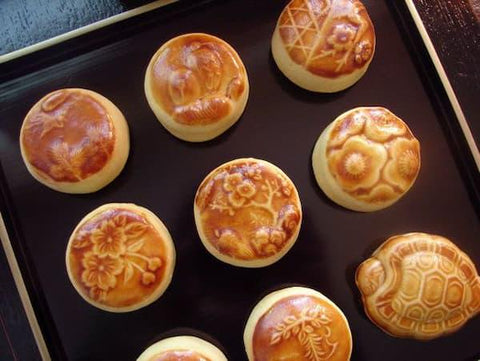
Le manju est un gâteau rond cuit à la vapeur, généralement rempli de pâte de haricots rouges sucrée.
Le manju est une pâtisserie recouverte de pâte pétrie et remplie d'ingrédients aromatisés comme l'anko, la confiture de châtaignes ou la patate douce. Il est généralement cuit à la vapeur et varie selon la région.
4.4. Dorayaki
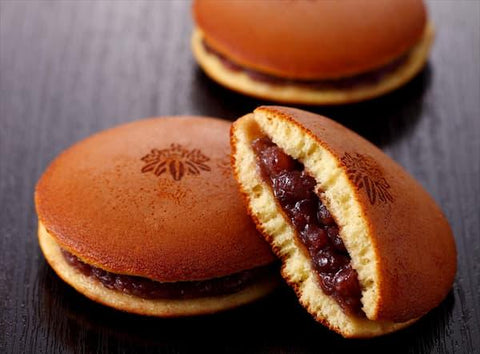
La pâte de haricots rouges sucrée est essentielle pour le Dorayaki
Le dorayaki est un gâteau fait de pâte de haricots rouges sucrée prise en sandwich entre deux couches de génoise moelleuse. Le nom "dora" en japonais signifie gong, reflétant sa forme, et "yaki" signifie cuire.
4.5. Namagashi
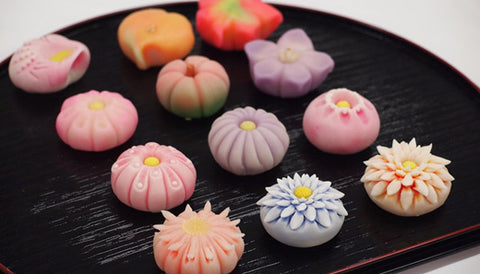
Le namagashi est façonné différemment et magnifiquement
Le namagashi est un type de wagashi considéré comme une œuvre d'art comestible, avec de magnifiques motifs saisonniers tels que des fleurs et des feuilles. Il est particulièrement populaire lors des cérémonies du thé japonaises et est le plus délicat de tous les types de wagashi, nécessitant une préparation et une consommation quotidiennes lorsqu'il est frais.
4.6. Taiyaki
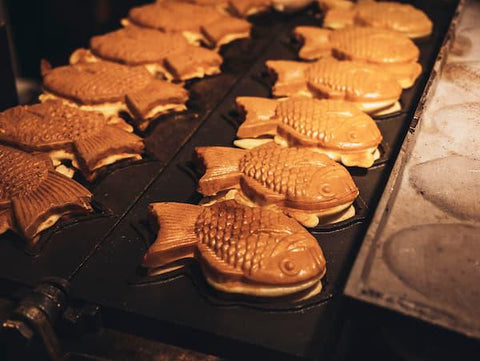
Les autres Taiyaki comprennent de la crème pâtissière, du fromage ou de la crème glacée au chocolat.
Le taiyaki est un gâteau japonais en forme de poisson, ressemblant à la brème de mer rouge. Traditionnellement, il est rempli de pâte de haricots rouges anko, mais vous pouvez trouver du Taiyaki rempli de chocolat, de matcha et même de crème glacée.
5. Comment acheter du Wagashi ?
Le Wagashi est devenu populaire dans tout le Japon et peut maintenant être facilement trouvé dans un certain nombre de cafés, restaurants, temples et jardins où le thé est servi. Si vous visitez Kyoto, explorer les nombreux magasins de collations traditionnels de la ville est un excellent moyen de découvrir le wagashi.
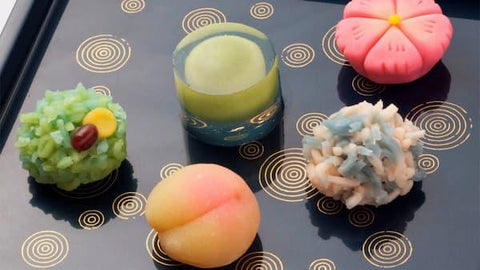
Le Wagashi est vendu dans de nombreux endroits au Japon
À Tokyo, la rue commerçante Nakamise à Asakusa est un endroit idéal pour déguster ces aliments. Ils sont également un choix de cadeau populaire à rapporter des voyages d'affaires et peuvent souvent être trouvés dans les grands magasins japonais situés dans les principales gares.
Pour ceux qui souhaitent en savoir plus sur le wagashi, il existe de nombreux cours traditionnels de fabrication de wagashi dispensés par des instructeurs certifiés. Dans ces cours, les participants peuvent découvrir la signification du wagashi et même déguster la nourriture de leur propre création.



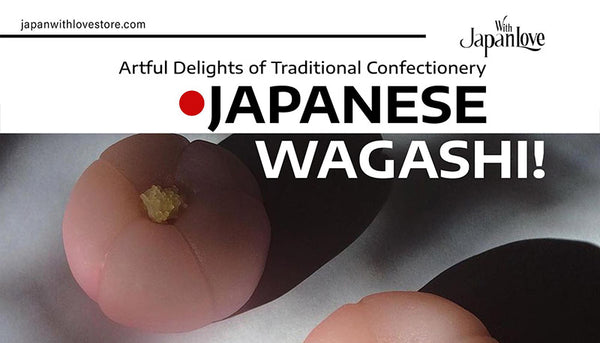

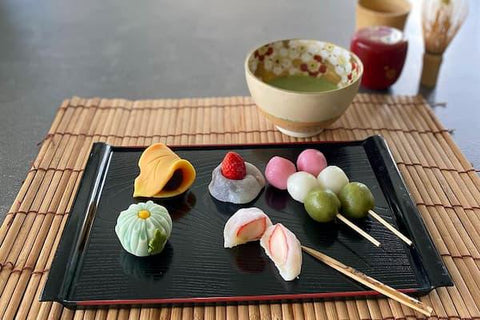












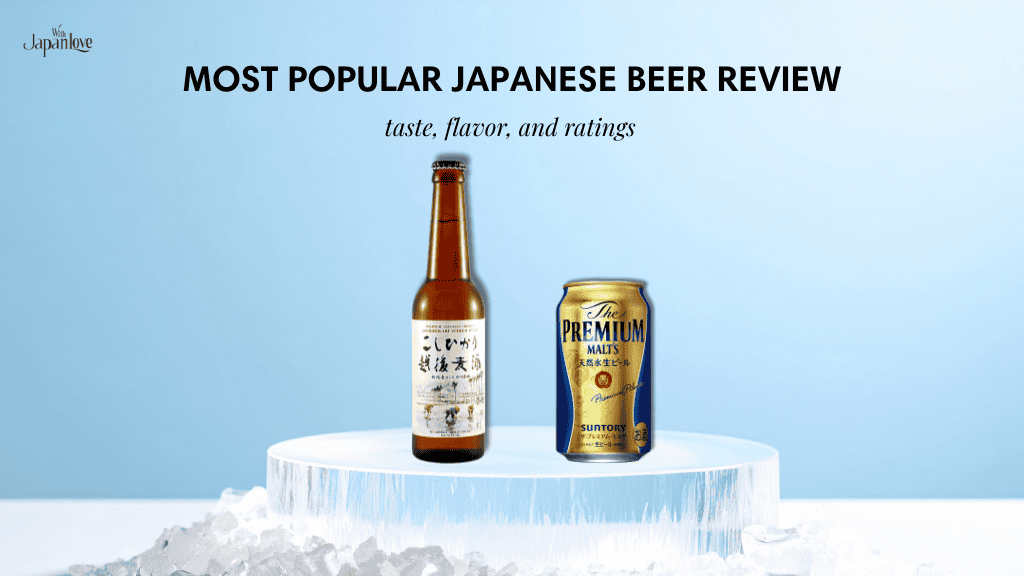



Partager:
Plus de 30 citations inspirantes sur les soins personnels pour nourrir votre esprit, votre corps et votre âme
Refonte de l'image de marque du Japon avec amour : un voyage de surprises et une meilleure expérience utilisateur du commerce électronique !